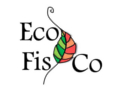Photoprotective strategies of mediterranean plants in relation to morphological traits and natural environmental pressure: a meta-analytical approach
- Authors:
- Fernández-Marín B, Hernández A, García-Plazaola JI, Esteban R, Míguez F, Artetxe U, Gómez-Sagasti MT
- Year:
- 1970
- Journal:
- Frontiers Plant Science
- Volume:
- 8
- ISBN/ISSN:
- 1664-462X
- Description:
-
Despite being a small geographic extension, Mediterranean Basin is characterized by an exceptional plant biodiversity. Adaptive responses of this biocoenosis are delineated by an unusual temporal dissociation along the year between optimal temperature for growth and water availability. This fact generates the combination of two environmental stress factors: a period of summer drought, variable in length and intensity, and the occurrence of mild to cold winters. Both abiotic factors, trigger the generation of (photo) oxidative stress and plants orchestrate an arsenal of structural, physiological, biochemical, and molecular mechanisms to withstand such environmental injuries. In the last two decades an important effort has been made to characterize the adaptive morphological and ecophysiological traits behind plant survival strategies with an eye to predict how they will respond to future climatic changes. In the present work, we have compiled data from 89 studies following a meta-analytical approach with the aim of assessing the composition and plasticity of photosynthetic pigments and low-molecular-weight antioxidants (tocopherols, glutathione, and ascorbic acid) of wild Mediterranean plant species. The influence of internal plant and leaf factors on such composition together with the stress responsiveness, were also analyzed. This approach enabled to obtain data from 73 species of the Mediterranean flora, with the genus Quercus being the most frequently studied. Main highlights of present analysis are: (i) sort of photoprotective mechanisms do not differ between Mediterranean plants and other floras but they show higher plasticity indexes; (ii) a-tocopherol among the antioxidants and violaxanthin-cycle pigments show the highest responsiveness to environmental factors; (iii) both winter and drought stresses induce overnight retention of de-epoxidised violaxanthin-cycle pigments; (iv) this retention correlates with depressions of Fv/Fm; and (v) contrary to what could be expected, mature leaves showed higher accumulation of hydrophilic antioxidants than young leaves, and sclerophyllous leaves higher biochemical photoprotective demand than membranous leaves. In a global climatic change scenario,the plasticity of their photoprotective mechanisms will likely benefit Mediterranean species against oceanic ones. Nevertheless, deep research of ecoregions other than the Mediterranean Basin will be needed to fully understand photoprotection strategies of this extremely biodiverse floristic biome: the Mediterranean ecosystem.

